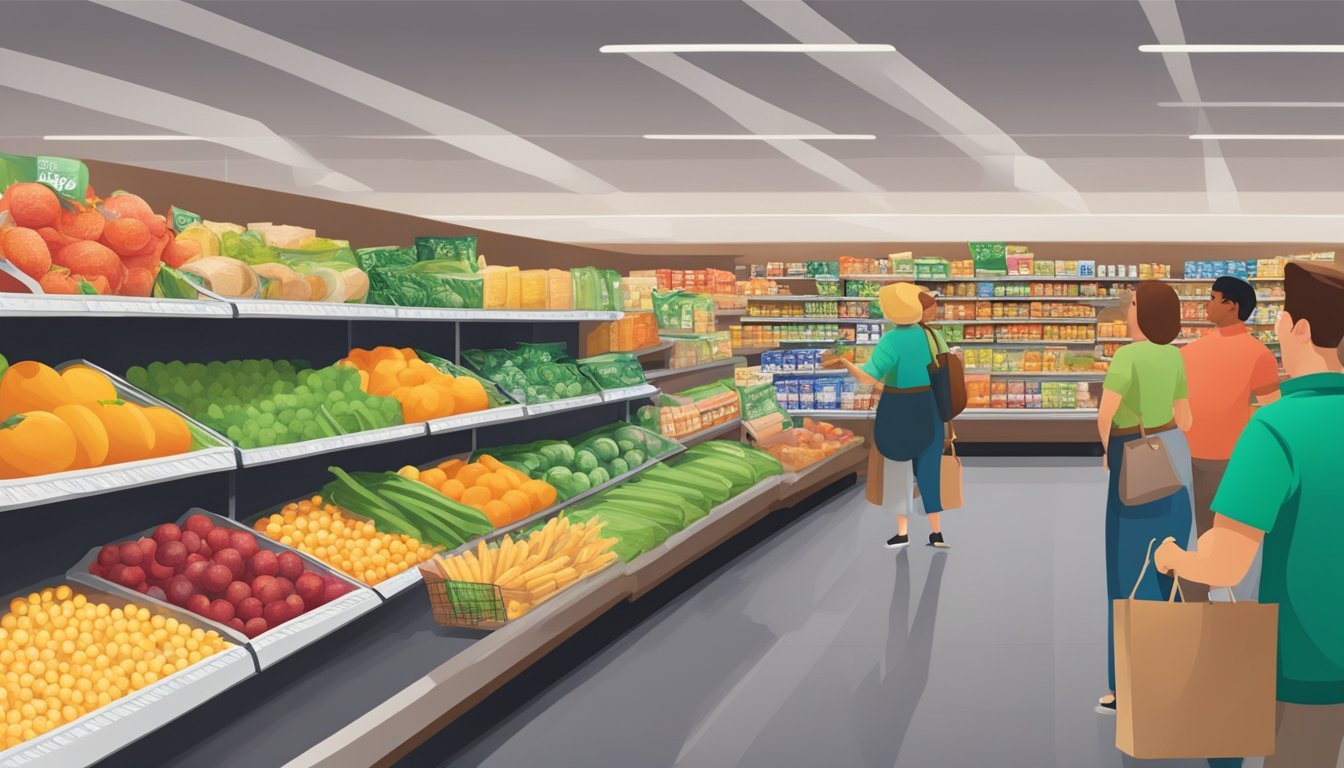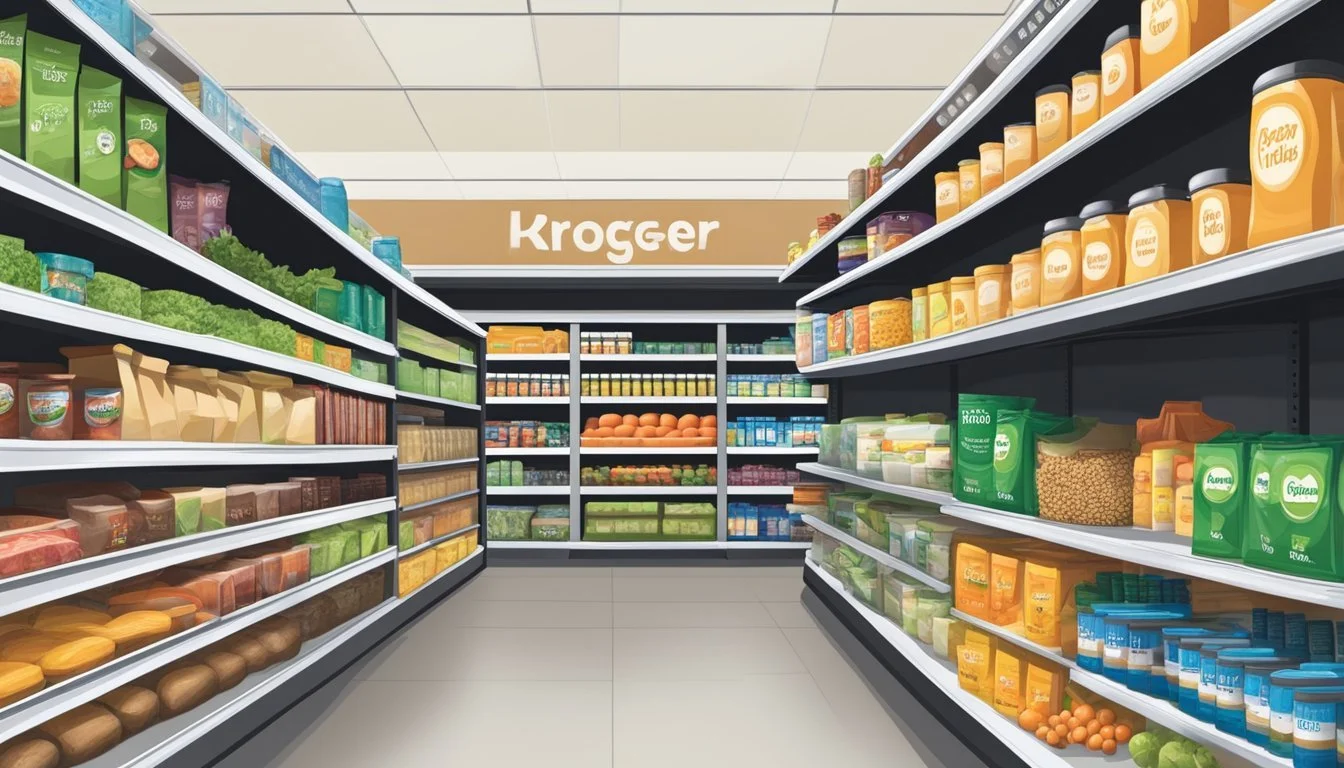Is Kroger Cheaper Than Publix?
Comparing Grocery Prices and Deals
Part of Our Grocery Store Guide with Details on Kroger Prices and Publix Prices
When considering their grocery budget, many shoppers find themselves comparing prices at different supermarkets to stretch their dollars further. Two notable contenders consistently arise in the conversation about cost-efficiency: Kroger and Publix. Both are esteemed grocery chains, with Kroger having a broader national footprint while Publix is a dominant player in the southeastern United States. Price comparison remains at the forefront for consumers looking to maximize value while maintaining quality.
The debate on whether Kroger or Publix offers lower prices has been ongoing, with various price checks and comparisons made to deduce the most cost-effective option. Evidence suggests that Kroger often comes out ahead in terms of affordability, outperforming Publix in several common grocery categories. Consumers can expect a range of savings on store brand items at Kroger, with potential reductions between 10% to 50% compared to Publix prices. This finding is consistent across multiple product categories, leading to broader savings for those who choose to shop at Kroger.
However, the decision on where to purchase groceries isn't driven by price alone. Factors such as product selection, store cleanliness, customer service, and location convenience also weigh heavily on the minds of shoppers. While Kroger may take the lead in the price domain, Publix is often praised for its customer experience, which can influence a shopper's overall satisfaction and loyalty. Ultimately, both supermarkets offer unique advantages, and the choice may come down to personal preferences and priorities beyond the price tag.
Comparing Kroger and Publix Pricing
When shoppers decide where to buy groceries, pricing is a key factor. Kroger and Publix are both popular grocery chains, but they often have different pricing structures. Recent comparisons suggest that Kroger tends to offer lower prices than Publix across various products. It is important for consumers looking for value to consider these differences.
For instance, specific items at Kroger were found to be 10% to 50% cheaper when compared with Publix. This is particularly noticeable in common shopping categories, where Kroger consistently offers savings.
Category Kroger Publix Dairy ✓ Produce ✓ Bakery ✓
✓ indicates which store offers lower prices in the given category.
In terms of individual products, like bananas, bread, eggs, and milk, shoppers frequently find Kroger maintains the lowest price. An example of this is the price of bananas at Kroger ($1.99/pound) which was less expensive compared to Publix.
The price comparison study also shows an overall pattern where Kroger is more pocket-friendly. With total shopping costs notably lower at Kroger, customers are likely to benefit from the cumulative savings on their grocery bills.
However, it's critical to note that price isn’t the sole factor to consider. While Kroger offers lower prices, Publix may attract customers with other benefits such as store experience and product selection, although these factors are beyond the scope of the current pricing analysis.
Grocery Categories and Price Breakdown
When comparing grocery prices between Kroger and Publix, shoppers will find that Kroger tends to offer lower prices across several categories. This section provides a detailed breakdown by category, highlighting where consumers can typically save money.
Meat
At Kroger, customers can often find meat, especially chicken breasts (What wine goes well with chicken breast?), at more competitive prices than Publix. For instance:
Chicken breasts: Kroger may offer these at a price point lower than Publix by a notable margin.
Produce
Produce, such as bananas, usually comes with a smaller price tag at Kroger. An example of the savings is:
Bananas: Shoppers can expect to pay less per pound for bananas at Kroger compared to Publix.
Dairy
Dairy items, including milk and butter, are often priced lower at Kroger. Sample prices include:
Milk: A gallon of milk often costs less at Kroger.
Butter: Savings on butter per unit can be observed at Kroger.
Dry Goods and Pantry Staples
For dry goods and pantry staples, Kroger typically offers more affordable options. Essential products have been noted to be cheaper, such as:
Eggs: The cost of a dozen eggs at Kroger is usually less expensive.
Frozen Foods
In the frozen foods category, Kroger has been known to undercut Publix with better deals on a variety of frozen items.
Baking and Canned Goods
Shoppers seeking baking and canned goods will find that Kroger often provides lower prices. This includes commonly used staples like:
Baking goods: Ingredients for baking are generally more cost-effective at Kroger.
Canned goods: There's noticeable cost savings on canned products at Kroger compared to Publix.
Brand vs. Store-Brand Comparison
When comparing brand and store-brand products at Kroger and Publix, price disparities can be notably observed across various categories such as dairy products, staple goods, and fresh produce.
Dairy Products
In the dairy aisles, shoppers will find that Kroger typically offers store-brand milk and butter at lower prices than Publix. A gallon of Kroger’s store-brand milk often costs less compared to Publix's equivalent. The price difference extends to other dairy staples, including store-brand mozzarella cheese and butter, which are more budget-friendly at Kroger.
Staple Goods
Eggs and other staple goods exhibit a similar trend. Kroger’s store-brand eggs can be frequently purchased for less than Publix’s store-brand. The price gap becomes more evident when looking at other packaged staple goods such as cereals and canned goods, where Kroger’s pricing strategy is to position their store brands as a cost-effective alternative.
Fresh Produce
Moving to the produce section, fresh produce prices can vary due to seasonal changes and regional availability; however, Kroger generally positions its store-brand produce at competitive pricing points, often lower than Publix's comparable produce items. This includes a variety of fruits and vegetables, where the savings with Kroger’s store-brand can be especially advantageous for shoppers focused on price.
Discounts and Savings Opportunities
Both Kroger and Publix offer a variety of savings opportunities that allow shoppers to significantly reduce their grocery bills. These strategies include weekly deals, digital and paper coupons, as well as loyalty rewards programs.
Weekly Deals and Discounts
Every week, Kroger and Publix release a weekly circular that showcases the latest deals and discounts on a variety of products. Shoppers can find these circulars in-store or access them online to plan their shopping around the best offers. These deals typically include discounts on everything from produce to personal care items.
Coupons and Digital Savings
Coupons are a staple at both Kroger and Publix, with both stores offering a mix of traditional paper coupons and digital coupons. Kroger’s digital coupons can be easily accessed on their app or website and directly linked to the loyalty card, allowing for automatic redemption at checkout. Publix also provides digital coupons, which customers can clip on the Publix app or website before shopping.
To use digital coupons, shoppers simply:
Load the desired coupons onto their store’s loyalty card or app
Scan the card or app at checkout
Instantly save money as discounts are applied
Loyalty Programs
Loyalty programs provide a long-term strategy to save money at both retailers.
Kroger has a loyalty program that rewards customers with:
Fuel points for every purchase
Customized deals
Additional savings on groceries
Publix offers its customers:
Club membership benefits
Exclusive email offers
Cash back apps partnerships that offer additional opportunities to earn rewards
By taking full advantage of these discounts and savings opportunities, shoppers can effectively cut costs on their grocery bills without compromising on quality or product preference.
Additional Cost Factors
When comparing Kroger to Publix, customers should consider more than just sticker prices. Factors like the range of organic products, the ease of the shopping experience, and the quality of customer service all play significant roles in the overall value and can impact one's grocery budget.
Quality and Organic Offerings
Kroger and Publix both offer a selection of organic and high-quality products, but the availability and pricing might vary. Kroger has a robust organic section under its Simple Truth brand, which often undercuts comparable items at Publix on price. Shoppers with a focus on organic options may find Kroger more budget-friendly, though Publix also provides its own GreenWise line of organic products.
Store Layout and Shopping Experience
The design of a store affects how quickly and comfortably customers can navigate and complete their shopping. While Publix is known for its clean aisles and well-organized products, Kroger's layout can also be shopper-friendly with an emphasis on convenience. One's preference for store layout should factor into their choice, especially if it affects the time spent shopping, a valuable resource.
Customer Service Quality
Customer service quality can greatly enhance or detract from the shopping experience. Publix has a longstanding reputation for excellent customer service, with employees frequently going above and beyond for shoppers. This aspect, even if it may not affect the bottom line directly, could justify a higher price point for some customers who value service highly in their shopping categories. Kroger also offers commendable service, but Publix tends to be rated higher in this area.
Regional Price Variations
Comparing grocery prices at Kroger and Publix can yield different results depending on the regional state market conditions. Prices are affected by factors such as local competition, state taxes, distribution costs, and demographic demands.
Southern States
In southern states, Publix has a strong presence, particularly in its headquarters state of Florida, specifically the city of Lakeland. The prices at Publix may be competitive, but Kroger often undercuts them on store brand items. When examining Atlanta, Georgia, which is a major urban center in the South, Kroger's pricing structure benefits from economies of scale, potentially offering lower prices compared to Publix in this populous region.
Atlanta, GA: Kroger has price advantages on various key grocery items.
Lakeland, FL: Publix, though headquartered here, faces stiff competition from Kroger in terms of pricing.
Midwestern States
Kroger is based in Cincinnati, Ohio, and generally, its stores in the Midwest offer lower grocery prices than Publix, as it operates a larger number of stores and has a well-established supply chain network in the region. States like Ohio often see more competitive pricing from Kroger, attributed to its long-standing market presence and robust distribution systems.
Cincinnati, OH: As a home base for Kroger, competitive pricing is significant.
Phoenix, AZ: Although not traditionally Midwest, as Kroger expands here, prices are expected to be lower compared to non-existent Publix stores.
In summary, regional variability in grocery pricing between Kroger and Publix is influenced by market saturation, regional operating costs, and local consumer preferences, with Kroger often leading in price competitiveness in the specified regions.
Comparative Analysis by Expert and Consumer Reviews
In the debate of whether Kroger is cheaper than Publix, both expert analyses and consumer reviews provide valuable insights into the pricing comparison.
Online Blogs and Newsletters
Michael Timmermann, a contributor to Clark.com, offers regular evaluations of grocery store prices in his newsletter, Michael Saves. His research indicates that Kroger generally offers lower prices compared to Publix. For instance, Timmermann's price comparison of 20 common grocery items found Kroger to be $8.58 cheaper, amounting to a saving of over 20%. While his findings are not comprehensive across all products, they offer a snapshot reflecting Kroger's pricing advantage in certain categories.
Customer Testimonials
Customers often voice their experiences through testimonials, revealing firsthand which retailer they find more affordable. Kroger, according to customer feedback, has a reputation for being cost-effective, especially for store brand items, with some shoppers noting savings ranging from 10% to 50% when compared to Publix. While individual saving experiences can vary, they align with expert analysis to suggest that Kroger frequently emerges as the more budget-friendly option.
Market Position and Competition
Kroger and Publix are significant players in the grocery store market, competing not only with each other but also with other retailers. Price comparisons show Kroger generally offers lower prices than Publix, affecting their market positioning.
Comparison with Other Retailers
Kroger, one of the largest grocery chains in the U.S., often has lower prices than Publix. It competes directly with other major grocery chains like Walmart, Safeway, Giant, and Sprouts Farmers Market. Kroger’s ability to offer competitive pricing is partly due to its extensive private label offerings, which typically undercut the prices of name-brand products. While Publix is known for its customer service and store experience, it competes with Whole Foods on quality, but often at higher prices than Kroger.
Discount grocers like Aldi influence Kroger's and Publix's pricing strategies. They've positioned themselves as affordable options, pressuring larger chains to adapt to maintain their customer base.
Impact of Discount Grocers
The rise of discount grocers such as Aldi and Food Lion has disrupted the traditional grocery market. These grocers prioritize low prices and efficient store formats, compelling chains like Kroger and Publix to reevaluate their price points and offerings. While Publix has a strong regional presence, it's impacted by the aggressive expansion of discount grocers, compelling them to maintain a balance between quality and cost-efficiency.
Kroger's scale allows it to leverage economies, enabling them to compete more aggressively on price. Furthermore, their strategic use of loyalty programs and digital coupons helps them retain price-sensitive customers who might otherwise turn to discount grocers for their shopping needs.
Product Availability and Variety
When comparing Kroger and Publix, customers will find differences in the availability of items and the variety of products offered by each store. These aspects can significantly impact the shopping experience, depending on individual needs and preferences in categories such as produce, pantry staples, and organic options.
In-Stock Items and Quantities
Kroger often provides a broad selection of pantry essentials like pasta, beans, and canned tomatoes, ensuring that staples are routinely in-stock and available in ample quantities. This allows for consistent access to basic ingredients. Publix maintains a commendable inventory of fresh produce, including organic produce, and is known for its stock levels that rarely leave shoppers without the desired fruits and vegetables, like potatoes and other fresh produce.
Specialty and International Options
Publix shines in the realm of specialty and international items, offering a diverse array of products that appeals to a wide consumer base. From exotic fruits to unique condiments, Publix ensures shoppers have access to global flavors. Kroger, too, delivers a respectable variety in this category, with a decent selection of international foods that cater to various ethnic cuisines.
Health-Focused and Dietary Ranges
Both retailers recognize the growing demand for health-conscious and dietary-specific products, including organic options and gluten-free or plant-based proteins. Publix has a well-curated section of health-focused products, making it easier for customers following specific diets to find what they need. Kroger also provides a substantial range of dietary products, especially marked with clear signage for organic produce and health-related items, simplifying the shopping process for those with special dietary requirements.
Purchasing Strategies for Consumers
When navigating the competitive pricing between Kroger and Publix, consumers should consider strategic approaches to maximize value and reduce their grocery bill. The following tactics can assist shoppers in making cost-effective decisions.
Bulk Buying and Unit Pricing
Buying in bulk can lead to substantial savings, especially when consumers pay attention to unit pricing. Shoppers should:
Compare the unit price on shelf tags to determine which size offers the best value.
Consider the storage space and consumption rate to avoid wastage.
Online Shopping and Pickup Services
Leveraging online shopping can present additional avenues for savings. Consumers might:
Take advantage of digital coupons and exclusive online promotions.
Utilize pickup services, such as Kroger's ClickList, to avoid impulse purchases.
Seasonal Shopping Tips
Shopping seasonally can also reduce grocery expenses. Consumers should:
Buy produce when it's in season to get the best prices and flavor.
Track sales cycles and stock up on basics when prices are lowest.
Conclusion
When comparing the prices of groceries between Kroger and Publix, data indicates that Kroger generally offers lower prices. These savings are noted across a diverse range of products and categories. Customers seeking budget-friendly shopping experiences often find Kroger to be the more economical choice.
Price Comparisons:
Store Brand Items: Kroger prices are 10% to 50% lower.
Common Categories: Kroger leads in affordability in most shopping categories.
Consumers benefit from Kroger's pricing strategies, especially those who prioritize cost over other factors. However, it should be noted that while Kroger is the frontrunner in terms of pricing, other aspects such as store ambiance, customer service, and product quality also play significant roles in the overall shopping experience, areas where Publix has its own strengths.
The choice between Kroger and Publix may ultimately depend on individual preferences and priorities:
For cost savings: Kroger is the preferred option.
Weighing other factors: Customers may choose Publix for reasons aside from price.
Both grocery stores have their own set of advantages that appeal to their respective customer bases, making the decision more nuanced than pricing alone.





